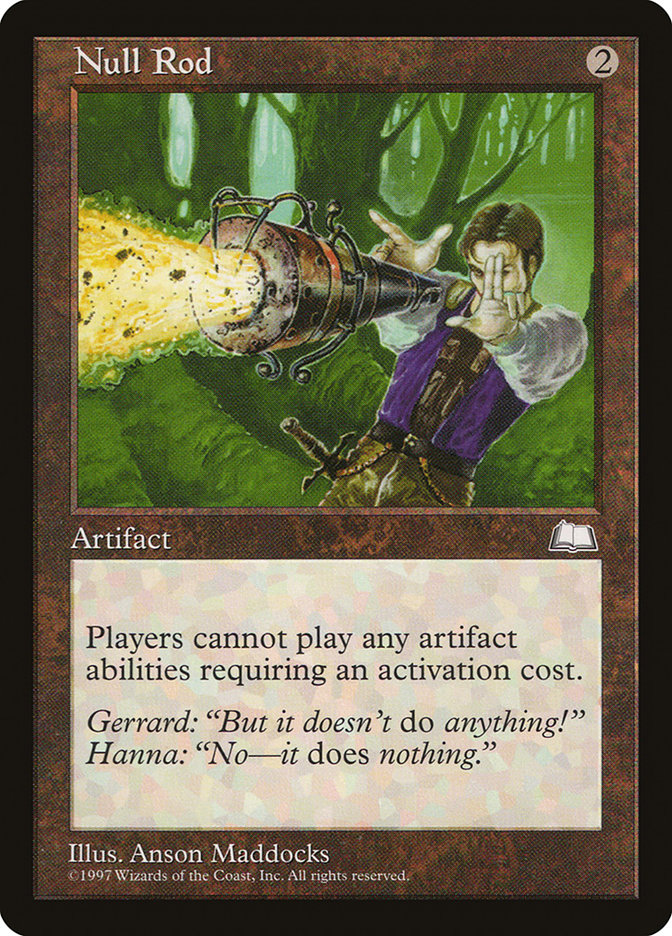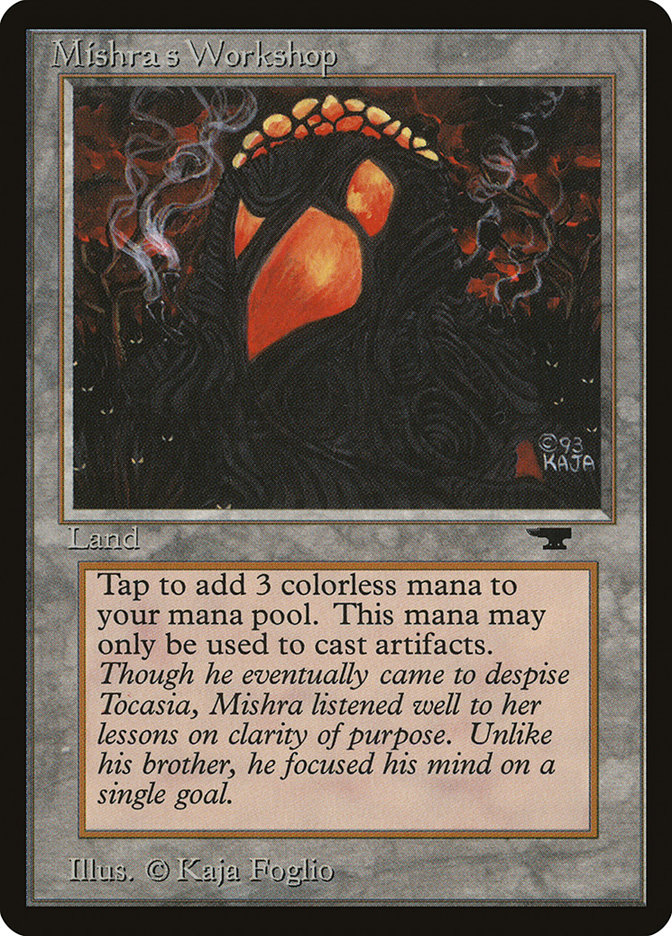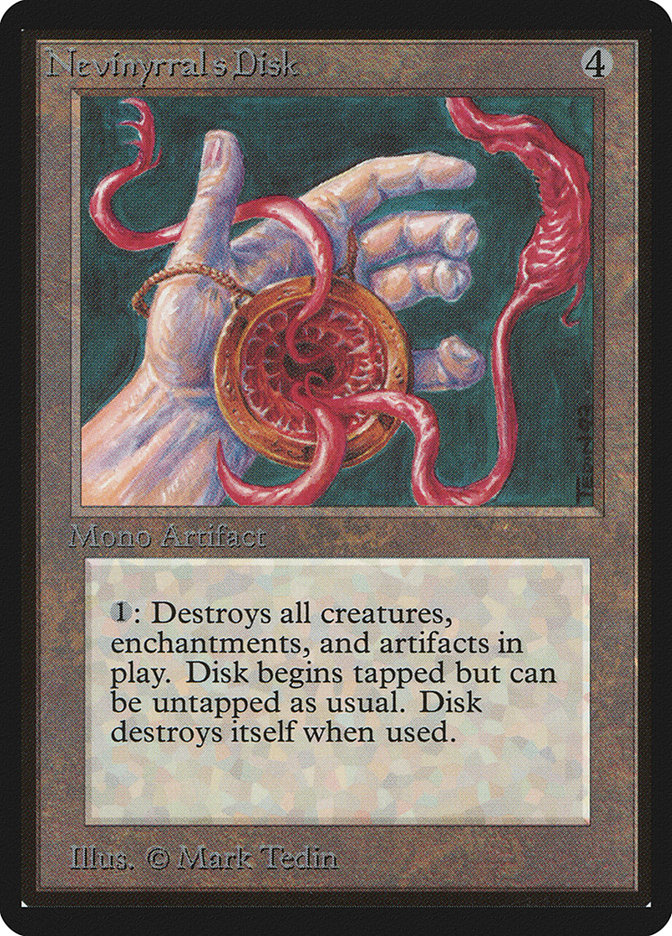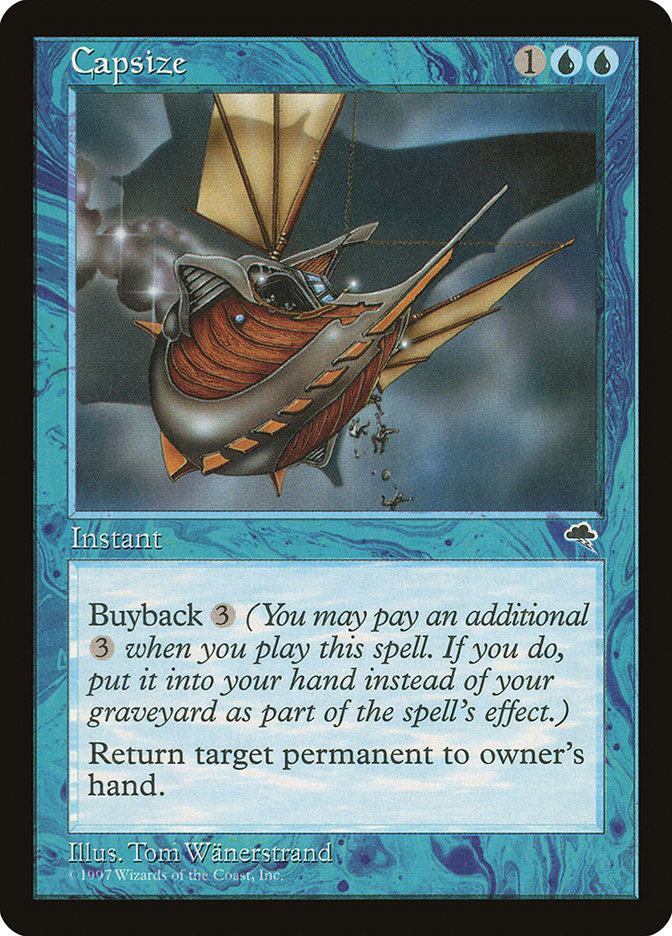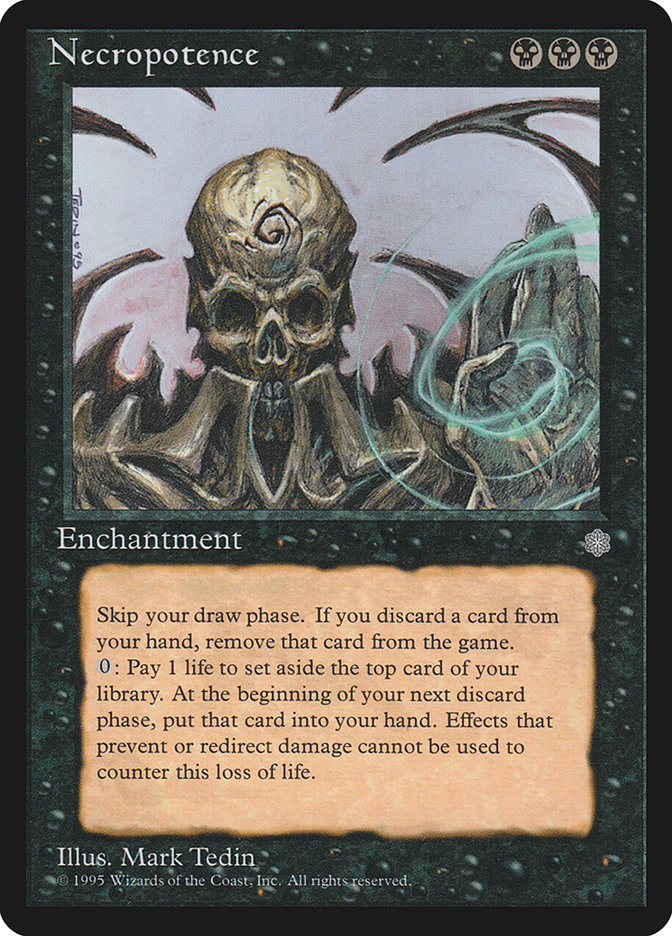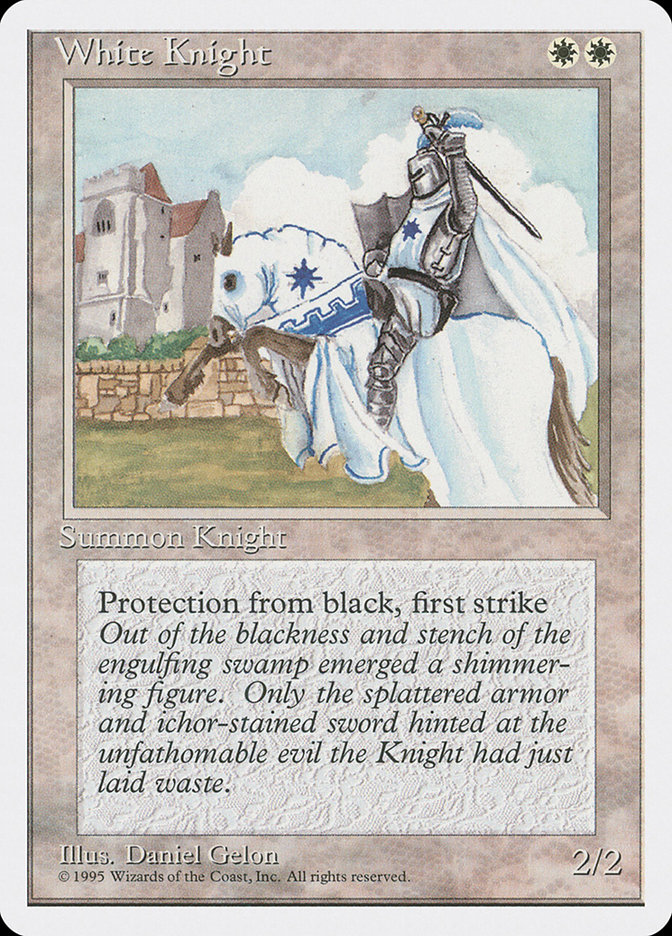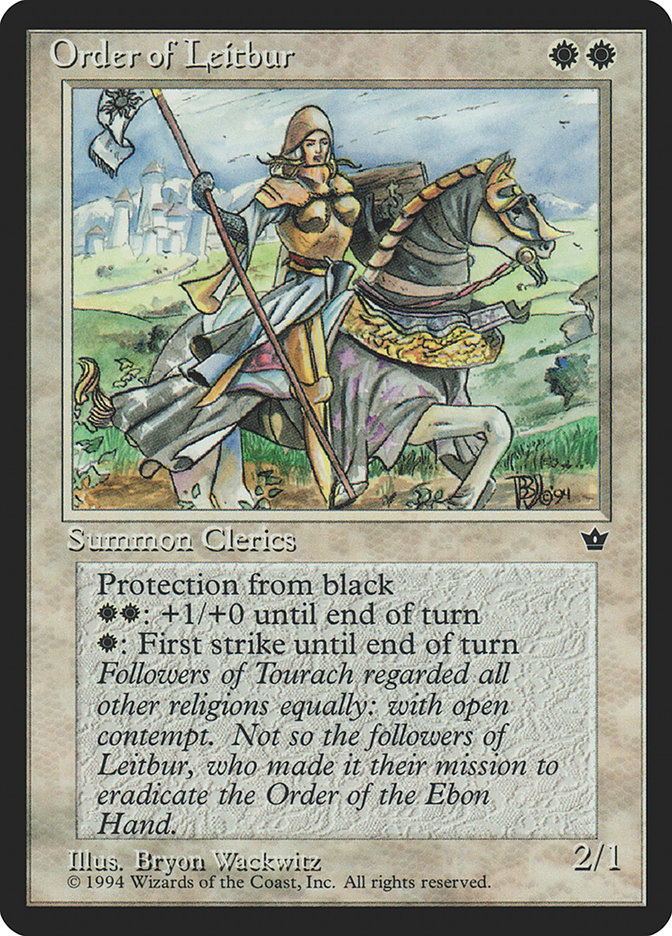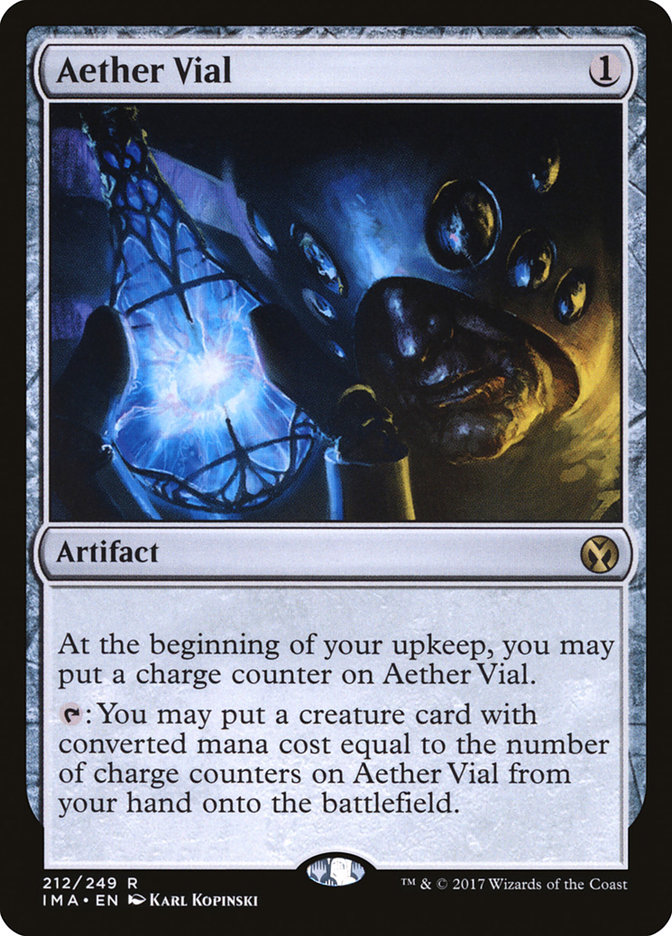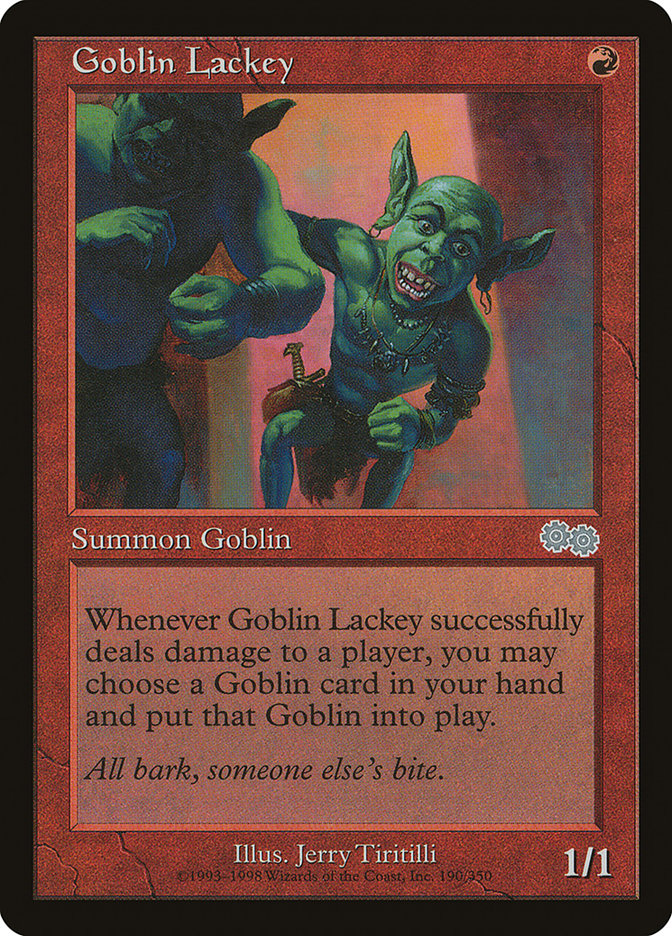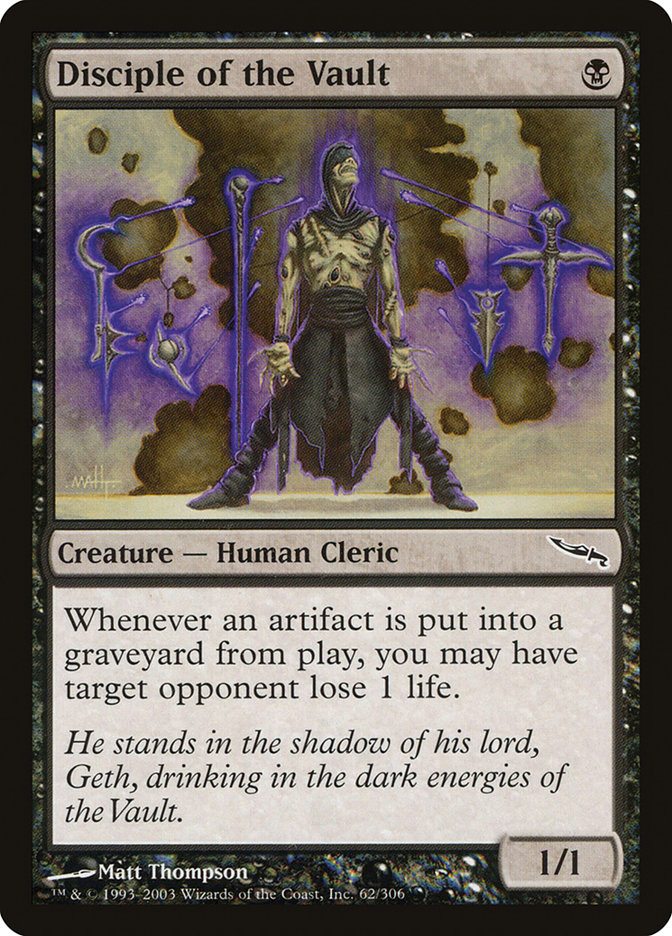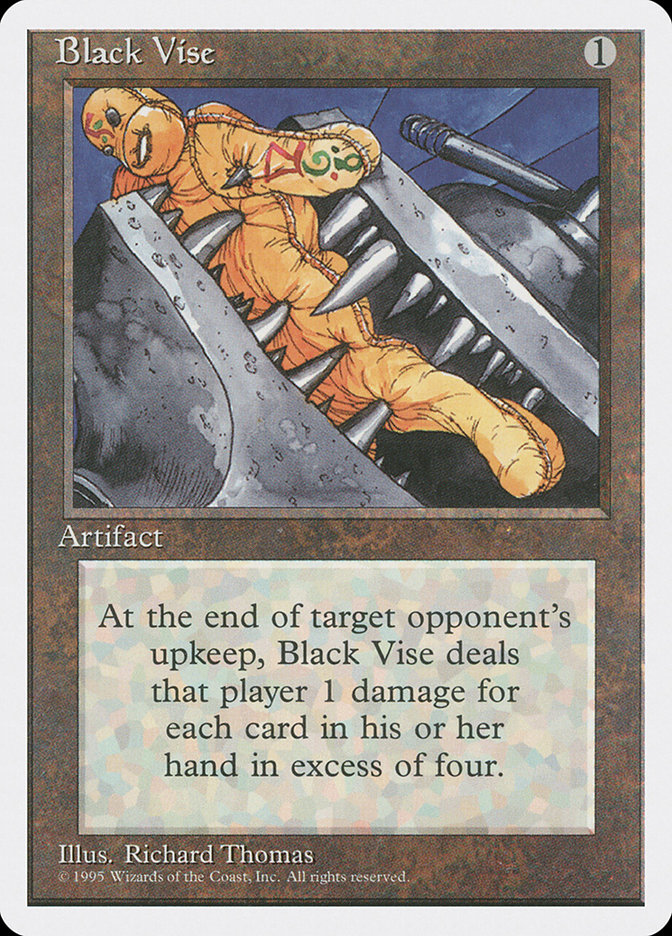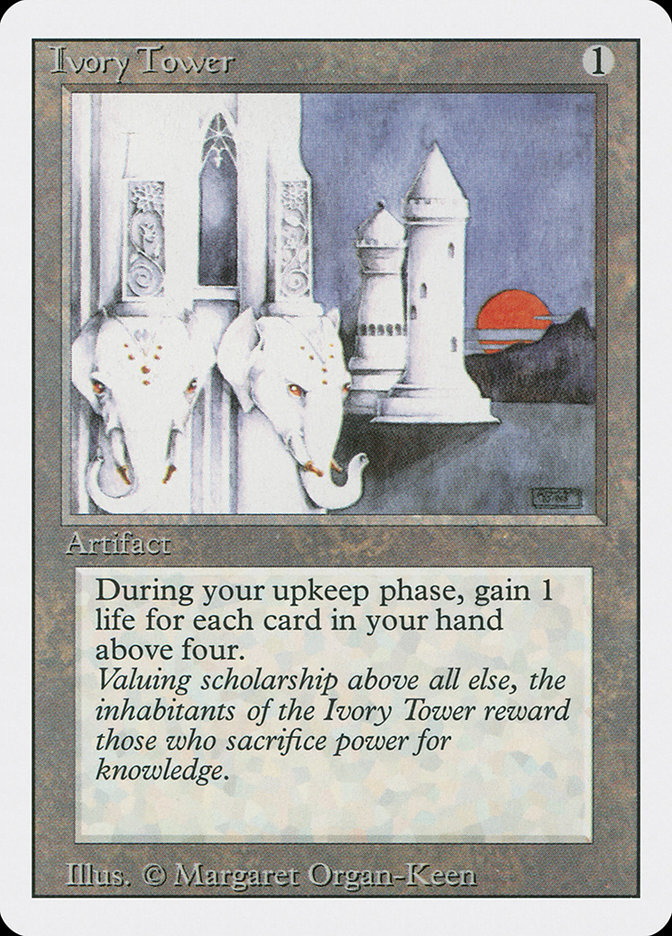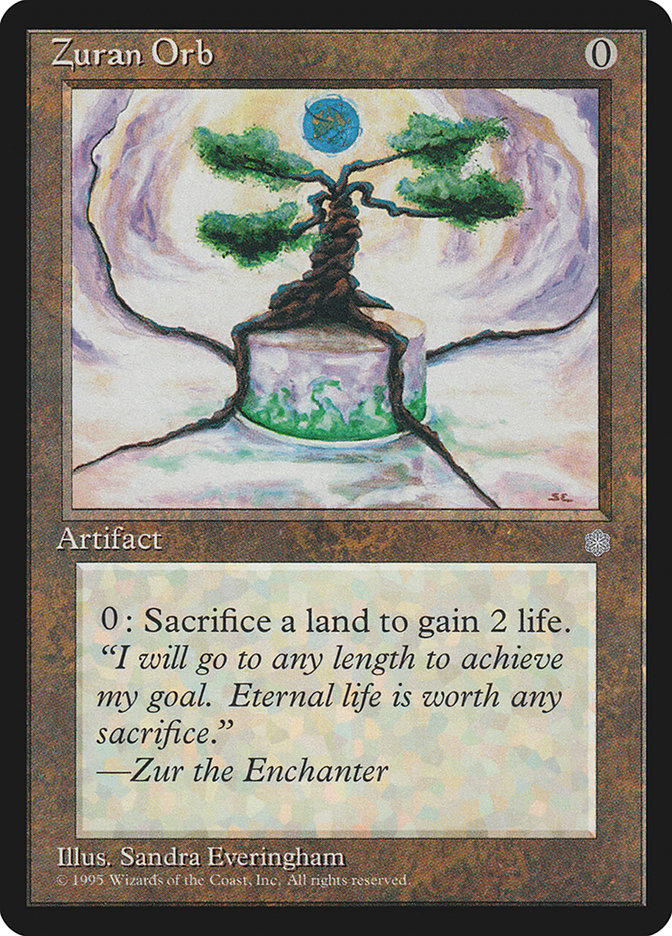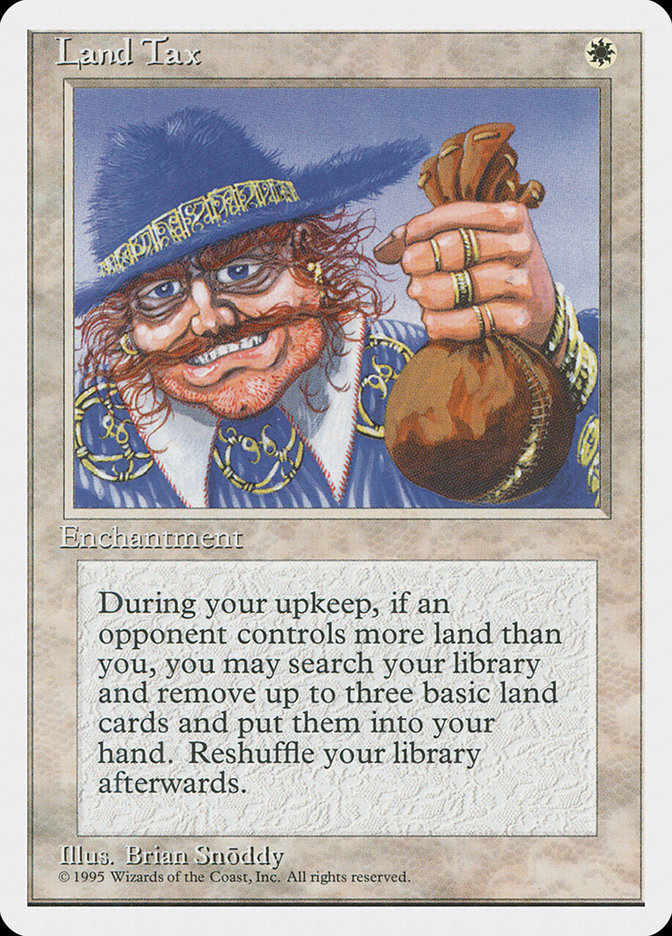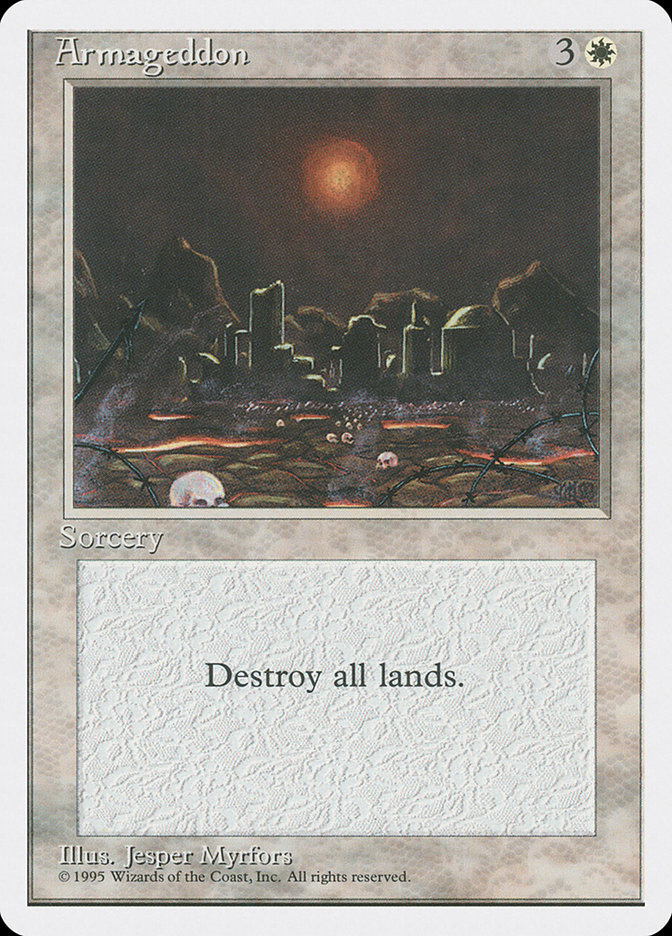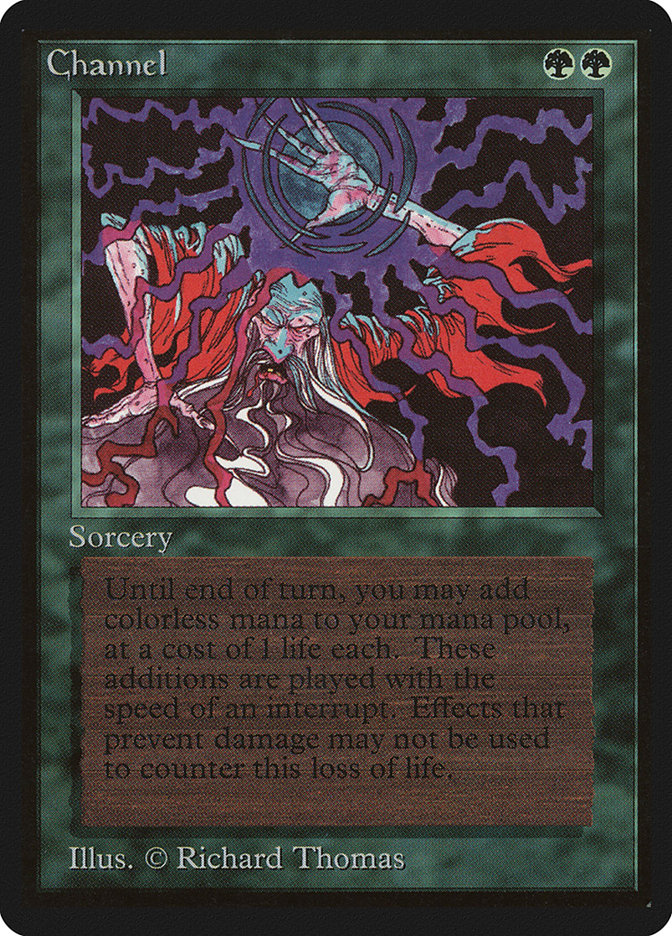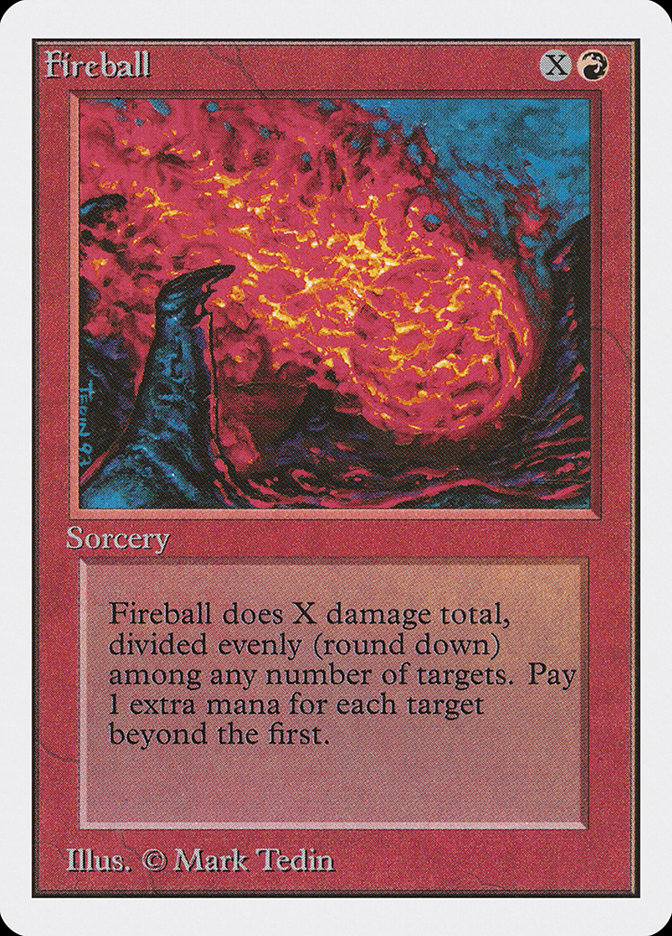Artifacts have not done too shabby, historically, and in the game’s first
25 years, there have been some pretty outrageous hits. All this week, we’re
taking a look at the Top 25 artifacts of all-time. The first five of our
countdown can be found
here
.
Between you and me, this list definitely actually contains closer to 50,
but I’m not writing a nineteen-part expose’ on artifacts that produce more
mana than they cost.
20. Chalice of the Void
Speaking of artifact mana, few cards in the game’s history have been as
overtly targeting of artifact mana as Chalice of the Void, especially the
Moxes.
Okay, okay, that one was pretty on the nose as well. Let’s just get this
out of the way…
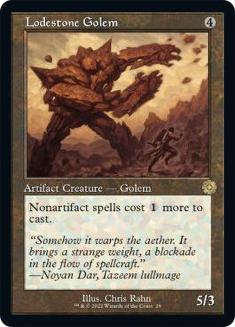

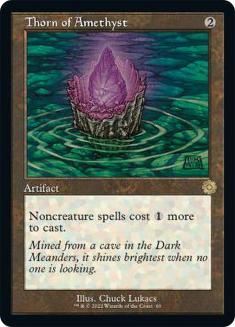
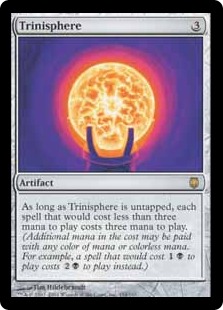
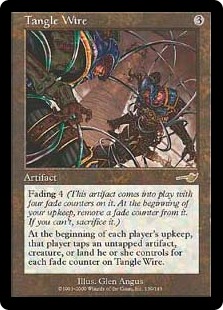


These are reasonably strong cards; however, regardless of restricted lists
and championship lists, these are not among the top 25 artifacts of
all-time. It is definitely Mishra’s Workshop doing it, not these cards.
Creatures (27)
- 4 Arcbound Ravager
- 1 Lodestone Golem
- 4 Steel Overseer
- 4 Phyrexian Revoker
- 3 Phyrexian Metamorph
- 2 Hangarback Walker
- 1 Chief of the Foundry
- 4 Foundry Inspector
- 4 Walking Ballista
Lands (18)
Spells (15)

Yes, of course, restricted classics Lodestone Golem, Trinisphere, Thorn of
Amethyst, and Chalice of the Void, all so powerful. It’s totally not the
Mishra’s Workshops…
Since, I mean, Foundry Inspector, Chief of the Foundry, and Phyrexian
Metamorph are all totally just on their own merits… You know, costing three
colorless…
Anyway, Chalice of the Void is a little bit of a special case. Maybe it’s
getting a bit of a boost from kind of representing all the $T4KS cards (The
$4K Solution, once the first two letters switched places, on account of the
Smokestacks that appeared in the lists).
Chalice of the Void is actually quite strong on its own, however, even
without Workshops. The key is just how effective a Chalice on one is, not
just a Chalice on two. The ability to lock out one-cost cards (which is one
of the absolute best costs, in general), has proven itself an extremely
influential force in Legacy and Modern, giving potent disruption to anyone
that can live without one-drops, themselves. For instance:
Creatures (17)
- 4 Simian Spirit Guide
- 3 Magus of the Moon
- 4 Goblin Rabblemaster
- 1 Pia and Kiran Nalaar
- 1 Hazoret the Fervent
- 4 Legion Warboss
Planeswalkers (4)
Lands (19)
Spells (20)

Yeah, of course, Ancient Tomb and City of Traitors aren’t the least Mishra’s Workshop-y, but even in Modern, Chalice of the Void
shows up quite frequently in decks that don’t rely on one-cost cards.
19. Nevinyrral’s Disk
Larry Niven’s Disk was the original “easy out” for decks relying on colors
without access to artifact or enchantment removal, namely blue decks and
black decks. When you’re playing a strategy with a lot of power that just
needs a catch-all solution to everything, it’s hard to do much better than
Nevinyrral’s Disk.
Spells (33)
- 4 Nevinyrral's Disk
- 4 Counterspell
- 2 Dissipate
- 4 Whispers of the Muse
- 4 Dismiss
- 1 Memory Lapse
- 3 Mana Leak
- 4 Impulse
- 3 Forbid
- 4 Force Spike
Sideboard

In true Draw-Go decks, the extremely heavy use of permission can contain
most threats as long as you don’t fall behind on the battlefield.
Nevinyrral’s Disk provides a catch-up mechanism for those that do sneak
through. Besides, you haven’t lived until you’ve seen the demoralized look
of an opponent that just had their battlefield destroyed by a Nevinyrral’s
Disk, with a Capsize bouncing it before the effect resolved.
Since Nevinyrral’s Disk merely destroys itself as part of the effect and
doesn’t require a sacrifice, you can use Capsize with the buyback on it to
run the full-rebuys.
Just as blue decks used the Disk to clean up problematic permanents that
snuck past permission, black decks used it to reset the battlefield after
stripping their opponent’s hand of any further resources.
Creatures (11)
Lands (23)
Spells (26)

One important interaction here is the use of Nevinyrral’s Disk with
Necropotence.
Necropotence is one of the most powerful card draw engines of all-time, but
it is not without a drawback. Sometimes your life total would run low and
you’d want to go back to drawing cards like normal. Despite black “not
having enchantment removal,” a simple activation of Nevinyrral’s Disk could
get you out of the dark bargain and back to drawing cards without life
loss.
Nevinyrral’s Disk also provided a safety valve for relieving some of the
pressure protection from black creatures would put on the strategy.
18. Aether Vial
Aether Vial has enjoyed a long and illustrious career as an enabler for
various linear aggro decks.
The list goes on and on. As long as you’ve got a fair number of one, two,
and three-drops, Aether Vial has got you covered. These days, the most
common Aether Vial strategy is probably Humans in Modern:
Creatures (37)
- 4 Meddling Mage
- 4 Noble Hierarch
- 4 Phantasmal Image
- 4 Champion of the Parish
- 3 Thalia, Guardian of Thraben
- 4 Mantis Rider
- 3 Reflector Mage
- 4 Thalia's Lieutenant
- 4 Kitesail Freebooter
- 3 Militia Bugler
Lands (19)
Spells (4)

While some Aether Vial decks just want it for the two or three mana
discount a turn it can afford, decks like this show just how powerful the
color-fixing requirements can be; alongside Cavern of Souls, it really
makes life hell for anyone overly reliant on permission.
Playing your creatures at instant speed, uncounterable, without paying
their costs… kind of abusive.
17. Black Vise
Black Vise was the original “cheesy” card, brutally punishing people who
stumbled on mana or came out of the gate slowly. Designed to punish
Counterspell decks, it ended up being so effective with Howling Mine as to
spawn numerous archetypes seeking to capitalize on its mana efficiency and
massive damage capacity in spots where everyone has too many cards,
regardless of what the opponent might be playing or not.
While Black Vise was more famously used in Gruul “Vise Age” decks, it has
also found a variety of interesting applications outside of such
straight-forward aggression. For instance, Turbo Stasis decks made use of
the (at the time restricted) Black Vise, in order to actually win matches
under time pressure, as well as tactically, against Necropotence decks that
needed their life as a resource (and generally, would always have seven
cards in hand).
Lands (25)
Spells (35)

While not cracking our top 25 list, the anti-Black Vise, Ivory Tower,
deserves an honorable mention.
Ivory Tower was good lifegain before there was good lifegain. The
incentives it promotes are not great, but back then, it was just so hard to
efficiently gain life, with two glaring exceptions. Ivory Tower (which was
obviously amazing with cards that filled your hand, like Land Tax, Howling
Mine, or Necropotence), and number sixteen on our list…
16. Zuran Orb
If you haven’t played against Zuran Orb, it can be easy to underestimate
just how outrageous of an impact this card has on games. It’s not just that
it’s zero mana to play; it’s zero mana to use. As such, you are effectively
threatening to sacrifice your lands at any time, without actually needing
to. You just get to play like you have fourteen more life than you actually
have, or whatever. If your opponent tries to make a big move to kill you,
or heaven forbid, tries to race you, you can just sacrifice what lands you
need to when the time comes.
While the life boost was so great as to make the card nearly ubiquitous,
some decks made even better use of it. Necropotence decks appreciated the
lifegain and insurance having a Zuran Orb would afford, without question;
however, perhaps the most effective users of Zuran Orb were Prison decks.
Lands (20)
Spells (42)
- 3 Armageddon
- 3 Wrath of God
- 3 Swords to Plowshares
- 3 Icy Manipulator
- 4 Howling Mine
- 3 Winter Orb
- 2 Land Tax
- 1 Ivory Tower
- 1 Balance
- 2 Earthquake
- 2 Circle of Protection: Red
- 2 Island Sanctuary
- 3 Fellwar Stone
- 3 Disenchant
- 4 Black Vise
- 3 Zuran Orb
Sideboard

For starters, Zuran Orb made triggering Land Tax much easier as well as
more profitable.
What’s more, if you’re just going to cast Armageddon anyway, you might as
well get a bunch of free life out of the deal.
In fact, Zuran Orb was one-half of the absolutely back-breaking Zuran Orb +
Balance combo that helped shape the era. Together, you’d get an Armageddon,
a Wrath of God, a total life reset, and frequently, even a Mind Twist, for
good measure.
Zuran Orb’s efficiency is unmatched, but it was also the enormous slowdown
of tournaments that lead to the card being restricted and banned in various
formats. Today, it doesn’t really have natural homes, as formats it is
legal in are not as about lifegain versus damage as some past years;
however, if you’re ever in the market for the best lifegain zero mana can
buy, you know where to turn.
Remember, it’s not the gaining of life from Zuran Orb that is so powerful…
It’s the threat that you could…



